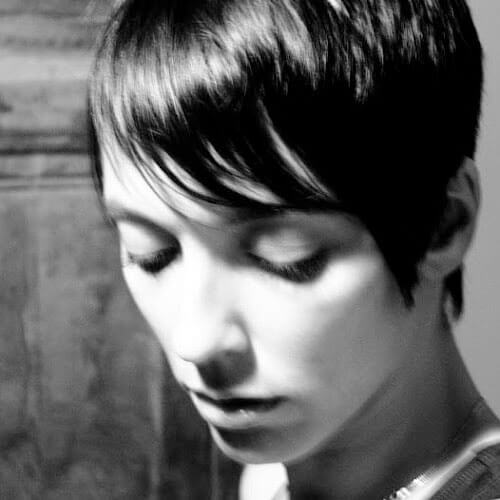Anka (born Anna Belova) was born on December 4, 1980. She spent her childhood with books on art and her mothers’ drawing tools, covering acres of paper with her drawings. In 1997 she entered the Moscow Architectural Institute deciding to follow in her mothers’ footsteps. But at the end of 1997 her mother was diagnosed with cancer and died in less that a year. Then her father died in 1999. After that Anka’s life changed dramatically. In attempt to keep sane, she plunged into an alternative lifestyle – working as a tattoo artist, singing in a rock-band, sometimes looking for escape in alcohol. In order to make a living while studying, Anka worked at several modeling agencies.
Thanks to the drawing lessons she wasn’t afraid to pose nude, and her photos appeared in the
Playboy and
XXL magazines and at the
Playboy 1999 photo exhibition. But she was not looking for a modeling career – it was just a way to make some money. In 2001 Anka was working in the post-production department at the Mosfilm StudiosThat same winter one of her colleagues invited her to spend a weekend in Saint-Petersburg with his friend, composer and musician Alexander Zhuravlev. In less than a month Anka said farewell to Moscow, her friends, her Mosfilm career and moved in with Alexander in Saint-Petersburg. Living with her loved one healed her soul, and she regained the urge for painting. She made several graphic works and ventured into other areas of visual arts.
In 2002
Gavriil Lubnin, the famous painter and her husband’s friend, showed her the oil painting technique, which she experimented with for the following several years. During that period she made just a few works because each one required unleashing of a serious emotional charge. All those paintings are different as if created by different people. Anka’s first exhibition took place on a local TV channel live on the air - the studio was decorated with her works. Several exhibitions followed. Private collections in Russia and abroad feature her paintings and sketches.
In 2006 Anka noticed that her inspiration often came from photos and decided to take up photography.
Since that time Anka took part in numerous projects - magazine publications and covers, book and CD covers, exhibitions. She is engage in digital photo art and analog film photography as well.
In 2013 Anka with her husband moves to live in Porto, Portugal.
Source: anka-zhuravleva.com
Interview With Anka Zhuravleva
All About Photo: When did you realize you wanted to be a photographer?
Anka Zhuravleva: "I always was about visual arts so I can't name exact date or year.. But I turned to photography completely in 2010."
AAP: Where did you study photography?
AZ: "I am self-educated. I took some individual workshops dedicated to analog processes but it was technical things."
AAP:Do you have a mentor?
AZ: "No."
AAP: Do you remember your first shot? What was it?
AZ: "I was 6 years.. I shot horses with small film lomo-camera."
AAP: What or who inspires you?
AZ: "Life, everything I got around me, my dreams, interesting people, my husband's music."
AAP: How could you describe your style?
AZ: "I have no special style. Different series in different styles."
AAP:Do you have a favorite photograph or series?
AZ: "No, I love them all!"
AAP: What kind of gear do you use? Camera, lens, digital, film?
AZ: "A lot... And they are changing all the time. Digital 35mm, film medium format, vintage cameras and cameras made by my husband. About 20 different lens, modern ones and vintage brass ones as well."
AAP: Do you spend a lot of time editing your images? For what purpose?
AZ: "It depends. I always edit digital a lot to reach exactly that tone and mood wich I need. And I also do analog process in darkroom without any computer at all."
AAP: Favorite(s) photographer(s)?
AZ: "This is a difficult question..."
AAP: What advice would you give a young photographer?
AZ: "To keep eyes wide open."
AAP: What mistake should a young photographer avoid?
AZ: "I don't know... Everybody make mistakes. I suppose it's important not "not making" mistakes, but learn after doing mistakes."
AAP: The compliment that touched you most?
AZ: "When people telling me that my pictures bring their mind, fantasy and soul to childhood or let them think about miracles.. Or making a good mood..."
AAP: If you were someone else who would it be?
AZ: "Hum... Maybe a baker? Just joking, I don't know..."